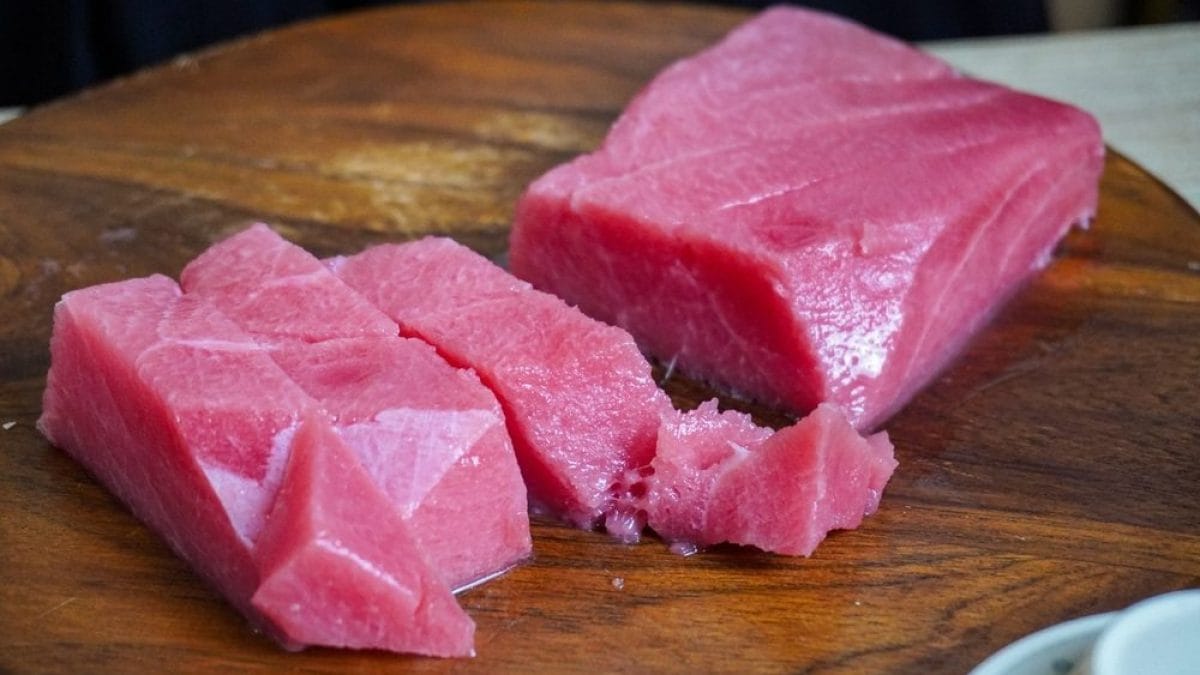
Tuna is one of the most consumed fish in the world. Its meat has a firm consistency, a bright red/pink color and a strong yet delicate flavor. In addition, it is rich in nutrients and low in fat. This is why it becomes versatile in the kitchen, lending itself to different preparations: there are refined and elaborate dishes such as sushi, tartare or carpaccio, but also simpler and equally impressive recipes such as salad, pasta or tuna in a crust with pistachios. We are not talking about canned tuna but the fresh product, which can be brought to the table either raw (after freezing) or cooked. It is important to point out that there is not just one type of tuna on the market: the two species that appear most frequently are the red tuna, which is prized and expensive, and the yellowfin tuna, which is more widespread and cheaper, but we should also mention the albacore tuna (with its characteristic light-coloured meat, so much so that it is also known as “white tuna”) and the skipjack tuna, a variety with a darker colour and a bitter taste, but more sustainable.
Tuna, in fact, is a fish species highly subject to exploitation and for this reason it must be purchased with awareness, better if provided with certifications that guarantee the protection of the fish and the sea, where there is complete information on traceability and the type of fishing. Responsible and moderate consumption not only impacts the environment, but is also a question of food safety: given its average large size, tuna tends to contain significant quantities of mercury, a metal that if accumulated in excess in the human body can prove harmful, especially in children and pregnant women. Having said that, let's see how to recognize fresh tuna, to enhance it in terms of benefits and gastronomically.
How to Recognize a Fresh Tuna
Fresh tuna can be sold in different forms. In fish markets or in some well-stocked fishmongers it is possible to find the whole specimen, even if its purchase is more frequent among restaurateurs or enthusiasts. Much more common are slices and fillets, with or without skin: the former are portions obtained (even on the spot) by cutting the fish into cross-sections, including both the lean part and the fattier part, while the latter, instead, are obtained from the dorsal or ventral areas (from here come the ventresca and the tarantello), more valuable. Once bought, the tuna must be cooked in the shortest time possible. How to understand if it is in perfect condition? Here are the details to pay attention to.
1. Color
The meat should be a nice intense red/pink, bright and uniform. It is important that the nuance does not tend towards brown or have dark spots or halos, signs of the beginning of oxidation. The surface should be moist, but never slimy: a slight shine indicates freshness, while an opaque appearance or a milky patina are elements that should put you on guard. Pay attention to one detail: sometimes tuna is preserved together with coloring substances (albeit natural) that serve to maintain the bright shades, misleading the customer. For this reason it is always better to rely on a trusted fishmonger and consider other factors.

2. Consistency
Are you able to touch the fish? When you press the flesh lightly, it should resist, feel firm, compact and elastic, returning immediately to its original shape without leaving a fingerprint. If it flakes easily or appears flaccid to the eye, it is probably not at its best.
3. Smell
Like all fresh fish, a good tuna gives off a delicate salty scent, reminiscent of the sea. In no case should it smell of ammonia or stand out in acidic scents, which denote a product that is several days old.

4. Pupil
Check the entire eye: if it is rounded or convex with the pupil still lit, it means that the fish is fresh. If on the contrary you notice that the eye is opaque and the pupil is milky, then the fish could be 2-3 days old; be careful if the pupil is dark, you could be in the presence of a defrosted product, an operation that must be reported by law.
5. Cutting
The condition of the portioned tuna should not be underestimated either. A compact, precisely cut slice suggests that the fish has been processed fresh. On the contrary, frayed or watery cuts may indicate a previously frozen specimen.
How to Clean Tuna
Buying a whole tuna is less common than choosing slices or fillets that are already prepared and treated by the fishmonger. Despite this, if it should happen, know that it is an operation that must be done immediately after purchase, to prevent bacterial proliferation. How to proceed? Equip yourself with protective gloves and special, resistant scissors. Cut the fins of the animal and using a very sharp knife (or the scissors themselves) cut into the abdomen and completely eviscerate, removing all the innards. At this point wash under running water to eliminate any residue. Pat dry, and the tuna is ready to be used in various preparations.
;Resize,width=767;)
